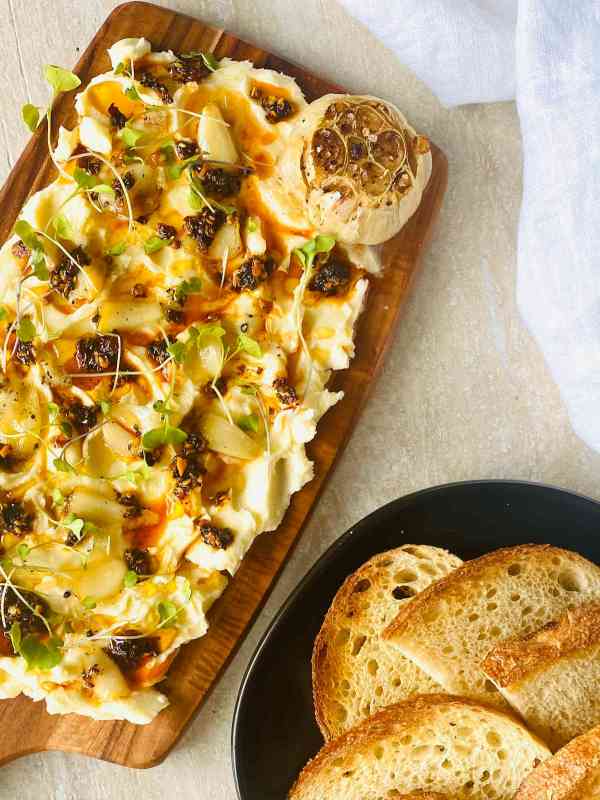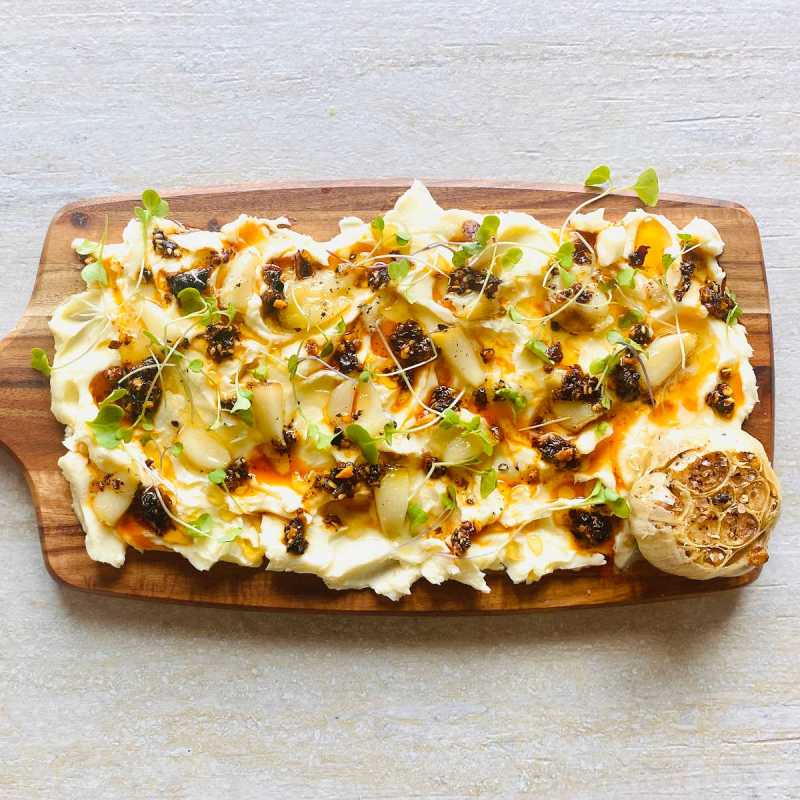Finally, a new TikTok trend we can be excited about. With all of the stupidity going around on the popular app lately, it’s about damn time. The butter board trend involves a completely customizable spread, topped with any and all of your favorite toppings. It’s simple to put together and great for large or small crowds. Or, you know, when you’re on the couch Netflix-ing alone. No judgment, here.
Sound good? We think so, too.
What are butter boards?
Simply put, a butter board is an appetizer board that’s composed of softened, spreadable butter and anything else you please. Some popular combinations we’ve seen so far include nuts, olives, specialty oils, honeys, dried fruits, and herbs. In addition to being a stunning centerpiece, a major part of this trend’s appeal comes from its adaptability and versatility. Anything that pairs well with butter (is there anything that doesn’t pair well with butter?) can be included on your board.
What is the butter board trend?
On September 15, New York cook Justine Doiron, posted an Instagram reel of a beautiful butter board she’d created. In just a few days, the view count of that reel was over 8 million, and a new darling of social media food trends was born. While Doiron credits Chef Joshua McFadden with the creation, it was her post that set the trend ablaze.
Since then, butter boards have been popping up all over social media. And it’s no wonder, with such a gorgeous, delicious, easy-to-make dish that will please just about everyone.
How to use butter boards at home — our favorite recipes
Chances are, you currently have everything in your kitchen at this very moment to create even a basic (but lovely) butter board. While part of this dish’s popularity is that it’s so visually attractive, it’s pretty easy to recreate one just as pretty at home, even if “food stylist” is nowhere to be found on your resume.
Choose the right serving vessel for your butter board
The first step is finding a serving vessel. Most of the designs we’ve seen thus far have been created on wooden boards, which most everyone has in their kitchen —even a cutting board would be perfect for this. No need to get too fancy. If you don’t have one of these at home, or you’re just totally over the rustic-chic trend (we get it), feel free to use any other serving plate or platter you have on hand.
Make sure your butter is soft
The next step is making sure your butter is perfectly spreadable. We’ve all experienced that horribly frustrating feeling of trying to spread cold butter on toast. Now imagine trying to do that on a huge serving board. Nope. Soften your butter. The best way to do this is by leaving it out on the counter until it reaches the perfect texture. In our experience, microwaving is just not the way to go here as it creates too many hot and cold spots. Practice your patience and leave it on the damned counter.
Consider the ingredients you want to add
And then there’s the matter of what you want to feature on top of your butter. As we’ve already stated, you can use popular pantry ingredients you probably already have — nuts, dried fruits, etc. If you have some time, or are planning a fancy party, branch out and get creative with fun ingredients like edible gold-leaf or flowers.
Sweet and spicy butter board recipe

(From Aubrey’s Kitchen)
There aren’t any measurements listed in this recipe, which we realize is a bit unusual. But the thing we love so much about this dish is that the details are entirely up to you. Obviously, if you have a larger serving board or platter, you’ll want to use more of your ingredients. If, however, it’s a more intimate gathering of two, a tiny plate garnished with small amounts of these ingredients would be completely charming. Also, if you love honey, go nuts and use a ton! Hate chili oil? No problem, don’t use it. The beauty of the butter board is that everything is completely up to you. Embrace your culinary freedom.
Ingredients:
- Butter, softened
- One head freshly roasted garlic
- Chili oil
- Honey
- Cashews
- Micro greens
- Sea salt
- French bread, crackers, or another bread you prefer
Method:
- Spread softened butter over a wooden board, swirling to create an attractive pattern as well as crevices for other ingredients to sit in.
- Sprinkle sea salt all over the butter.
- Layer other ingredients on top of salted butter, arranging any way you prefer.
- Serve with bread and/or crackers.
That’s it! In no time, you’ll have a delicious snack completely customized to your preferences.




